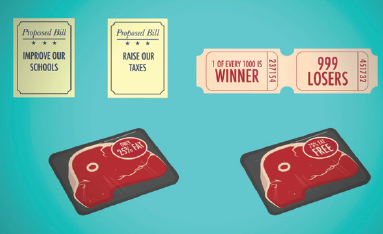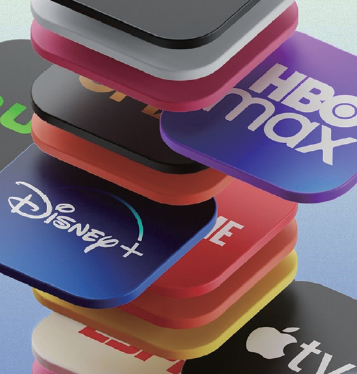Due to the recent inflation, shrinkflation has increased as the self-employed are downsizing their products instead of raising prices. Behind this measure lies the mechanism of “loss aversion,” a theory that is part of behavioral economics. Behavioral economics, a study that explains the irrationality of human beings, is an essential element of today’s successful marketing strategy. Therefore, the Sungkyun Times (SKT) would like to discuss the concept of behavioral economics, how businesses often utilize this study, and what stance we should take as consumers.
Inspecting the Psychology behind Decisions
Behavioral economics is a branch of economics that explains the mechanism behind human behavior through psychology, sociology, and environmental factors. While traditional economics is based on the fact that humans are rational and calculative beings, behavioral economics explains that humans’ rationality is limited and that people often make impulsive choices. For instance, according to traditional economics, the purchase rate of ice cream must rise if its price falls. However, in reality, consumers tend to doubt the product’s quality and taste and resist purchasing. As such, humans try to make the most reasonable choices, but cognitive, psychological, and environmental constraints restrict them. Daniel Kahneman and Richard H. Thaler won the Novel Prize in economics through their studies in behavioral economics, which allowed the concept to be recognized among the public. Today, theories in behavioral economics are applied to diverse fields including marketing, finance, political science, and public policies. Such fields tend to adopt the “nudge effect,” which smoothly induces a decision maker’s choice by discovering the cause behind irrational decisions. Behavioral economics is actively utilized in the field of marketing. Marketers can successfully affect consumer choices by manipulating the non-intrinsic attributes of goods, such as prices or display methods. Therefore, making good use of theories in behavioral economics is considered an essential step for a successful business.

How Marketers Nudge You to a Decision
Different Context, Different Results

The framing effect, a theory established by Daniel Kahneman and Amos Tversky, explains a cognitive bias where one’s decisions differ in accordance with how information is presented. The human brain intakes information differently based on the given context. As perception differs on whether one frames the glass as either half-full or half-empty, marketers often adopt the framing effect to manipulate consumers. The “buy 2 get 1 free” deal commonly seen in convenience stores is a typical example of the effect used in marketing. However, in reality, it is an unfriendly event with only a 33% discount through purchasing three items; the “get 1 free” phrase activates the framing effect, which tricks consumers into thinking there is a significant discount. Hence it “nudges” consumers into thinking that purchasing the product is a gain by changing the connotation of the message. Another example of the framing effect is a marketing tactic that was often used by hotel booking sites like Booking.com several years ago. When a consumer is scanning through several hotels on the website, a pop-up message that says “(number) of users viewed this place in the past 24 hours” or “(number) of users are viewing this hotel right now” is displayed. Hence, the consumer is tricked into thinking they are competing with others on limited resources.
The Fear of Losing
Another key concept of behavioral economics is loss aversion. Loss aversion refers to the psychology of wanting to avoid losing, as the pain of losing is twice as powerful as the pleasure of gaining. The recent shrinkflation phenomenon, where a product’s size or quantity is reduced, is an example of loss aversion. Consumers find this preferable to paying a higher price; they feel more pain when a visible notion – price – rises. The fear of losing is instinctively activated in the amygdala, a part of the brain that processes fearful and threatening stimuli. Thus, instead of logically processing which decision actually leads to a gain, humans intuitively calculate how to maintain the status quo. Loss aversion is well-used in marketing by creating a “not buying this product is a loss” frame. For instance, if a half-watermelon is sold for ₩8,000 and a whole watermelon is sold for ₩12,000, consumers instinctively think that purchasing a whole watermelon would lead to less loss. The insurance sector makes excellent use of loss aversion tactics. Insurance companies emphasize the list of catastrophes and accidents that may happen, which triggers loss aversion by amplifying the customer’s anxiety.

Leaving Is Painful: The Endowment Effect
Last but not least, the endowment effect is a psychological phenomenon where an individual places a higher value on an object they already own. Richard Thaler, the founder of the endowment effect and the author of the book, Nudge, found out that one feels more pain at the idea of losing one’s belongings. Trial events on online streaming platforms like Netflix also nudge consumers to continue their subscription option. Users that have enjoyed a one-month trial on Netflix tend to recognize the service as their possession. Moreover, companies often provide free refunds, as they know this marketing technique cannot lead to high losses. In 2020, Emart 24 accomplished “refund marketing” as their fresh food sales, noodle products, and snack sales increased significantly for seven months since the event. It is a profitable business strategy as consumers can purchase products without pressure but do not actually apply for a refund, as they feel as if returning the object purchased is a loss.

Recognize Your Irrationality
For a Wiser Consumption Habit
Corporations and various types of organizations utilize behavioral economics principles to encourage purchase decisions successfully. However, the “dark nudge,” a gimmick that cleverly induces irrational consumption decisions, is also typical in the market. There are numerous cases where hotel booking sites do not display the accommodation tax and service charges during the payment process. The pressure sales tactics in online sites that urgently induce purchases through signs such as “last minute sales” is also a type of dark nudge marketing. Consumers are exposed to such tactics daily, eventually leading to unreasonable consumption decisions. Therefore, just like businesses study behavioral economics in marketing, consumers can also establish wiser consumption habits by recognizing the principles of behavioral economics. It is important to admit one’s limitations in rationality and understand which restraints and motives are operating in the consumption process. For instance, people must realize whether they are being induced to purchase an unplanned product due to frames such as “buy 2 get 1 free” deals or limited-time offers. Corporations and organizations can also support consumers’ healthier choices by designing mechanisms such as mandatory cooling-off periods.
For Healthier Life Choices
Moreover, by understanding behavioral economics, consumers can also receive help in practicing daily choices such as following a diet or giving up smoking. Generally, individuals fail to carry out such plans due to a loss of self-control. The loss of control is caused by underestimating the impulse for immediate pleasure. Thus, understanding one’s cognitive weakness and employing external strategies to control oneself is essential. Park Tae-young, a professor of Consumer Science at Sungkyunkwan University (SKKU), explained reward substitution as a tool to build healthier habits by providing a reward to oneself. For example, if one wants to quit smoking, granting compensation every time they resist the urge to smoke a cigarette could be effective. Aside from reward substitution, Professor Kim Duk-gyu of Global Economics at SKKU also insisted on providing a commitment device that could restrain one’s future behavior. Another example of using commitment devices is registering to a study group with an attendance check or publicly announcing to carry out a certain plan. Utilizing websites, such as stickK, that gives financial or psychological penalties, can also help improve one’s lifestyle. Overall, the principles of behavioral economics are not just for corporations; instead, they are a tool that could shed light on consumers’ cognitive bias and decision-making process to encourage reasonable judgment.
Humans are not rational beings. We are beings that rationalize. Behavioral economics has been completing the flaws traditional economics made by overlooking one’s irrationality. It is time to properly recognize and understand behavioral economics for healthier, more reasonable decisions. The SKT hopes this article will be a soft nudge to encourage Kingos in understanding the field’s principles.
